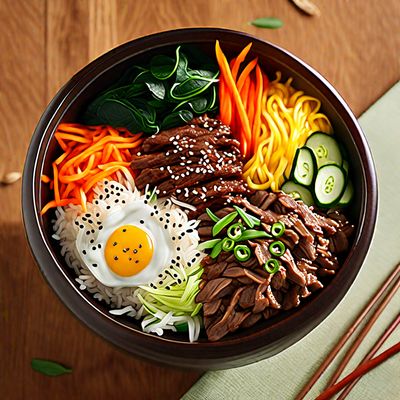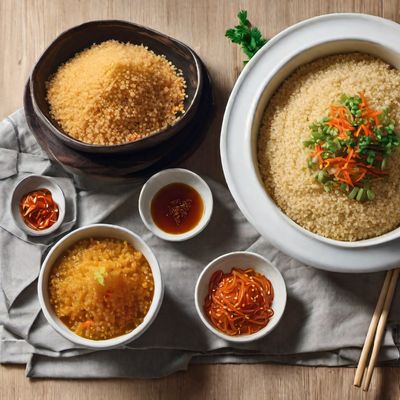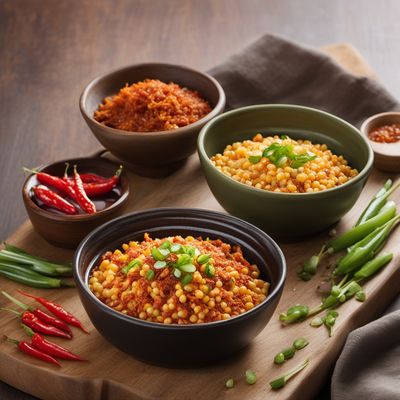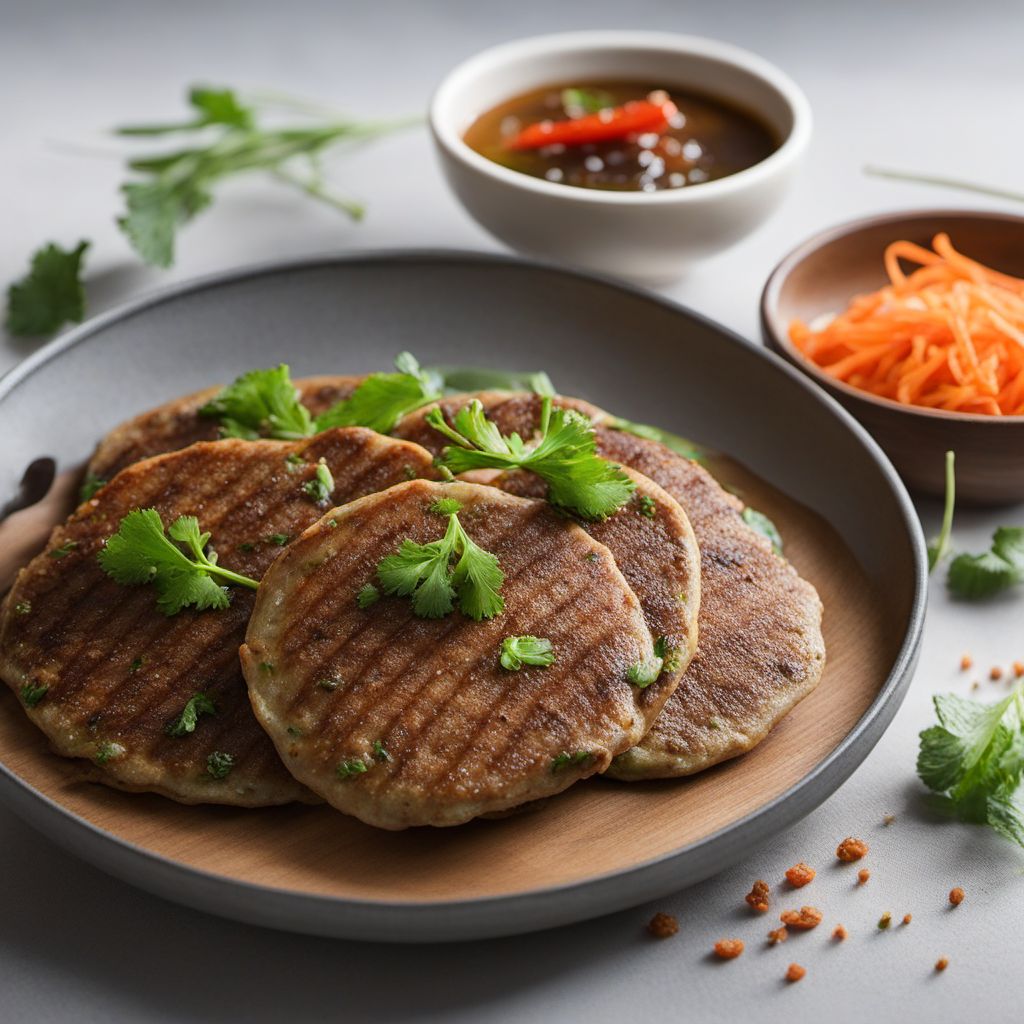
Recipe
Yukjeon: Korean Beef and Vegetable Pancakes
Savory Delights: Korean Beef and Vegetable Pancakes
4.5 out of 5
Indulge in the flavors of Korean cuisine with this authentic recipe for Yukjeon. These savory beef and vegetable pancakes are a popular dish in Korean cuisine, known for their crispy texture and delicious combination of flavors.
Metadata
Preparation time
20 minutes
Cooking time
15 minutes
Total time
35 minutes
Yields
4 servings
Preparation difficulty
Medium
Suitable for
Gluten-free, Dairy-free, Nut-free, Low-carb, High-protein
Allergens
Soy, Wheat
Not suitable for
Vegan, Vegetarian, Paleo, Keto, Halal
Ingredients
-
250g (8.8 oz) beef, thinly sliced 250g (8.8 oz) beef, thinly sliced
-
1 tablespoon soy sauce 1 tablespoon soy sauce
-
1 clove garlic, minced 1 clove garlic, minced
-
1 teaspoon sesame oil 1 teaspoon sesame oil
-
1/2 cup all-purpose flour 1/2 cup all-purpose flour
-
1/2 cup water 1/2 cup water
-
1 egg 1 egg
-
1/2 teaspoon salt 1/2 teaspoon salt
-
1/4 teaspoon black pepper 1/4 teaspoon black pepper
-
1 carrot, julienned 1 carrot, julienned
-
2 scallions, thinly sliced 2 scallions, thinly sliced
-
4 button mushrooms, thinly sliced 4 button mushrooms, thinly sliced
-
Vegetable oil, for frying Vegetable oil, for frying
Nutrition
- Calories: 280 kcal / 1172 KJ
- Fat: 12g (Saturated Fat: 3g)
- Carbohydrates: 20g (Sugar: 2g)
- Protein: 22g
- Fiber: 2g
- Salt: 1.5g
Preparation
-
1.In a bowl, combine the beef, soy sauce, minced garlic, and sesame oil. Mix well and let it marinate for 15 minutes.
-
2.In a separate bowl, whisk together the flour, water, egg, salt, and black pepper until smooth.
-
3.Heat a small amount of vegetable oil in a non-stick pan over medium heat.
-
4.Dip a slice of marinated beef into the batter, allowing any excess to drip off, and place it in the pan. Repeat with a few more slices of beef, leaving space between each pancake.
-
5.Scatter some julienned carrots, sliced scallions, and mushrooms over the beef slices in the pan.
-
6.Pour a small amount of the batter over the beef and vegetables, just enough to cover them.
-
7.Cook the pancakes for 2-3 minutes on each side, until golden brown and crispy.
-
8.Remove the pancakes from the pan and drain on a paper towel to remove any excess oil.
-
9.Repeat the process with the remaining beef, vegetables, and batter.
-
10.Serve the Yukjeon pancakes hot with a dipping sauce made from soy sauce, vinegar, and sesame seeds.
Treat your ingredients with care...
- Beef — For best results, use thinly sliced beef such as sirloin or ribeye. If you prefer a leaner option, you can use beef tenderloin.
- Vegetables — Feel free to add or substitute vegetables according to your preference. Thinly sliced zucchini or bell peppers can be great additions to the pancakes.
- Dipping sauce — Adjust the amount of sesame seeds according to your taste preference. Toasting the sesame seeds before adding them to the sauce can enhance their flavor.
Tips & Tricks
- Make sure the beef is thinly sliced to ensure quick and even cooking.
- Adjust the amount of salt and pepper in the batter according to your taste preference.
- Serve the pancakes immediately after frying to maintain their crispiness.
- You can make the dipping sauce in advance and refrigerate it for up to a week.
- Experiment with different vegetable combinations to create your own unique Yukjeon pancakes.
Serving advice
Serve the Yukjeon pancakes as a main course with a side of steamed rice and kimchi. They can also be served as an appetizer or a snack.
Presentation advice
Arrange the Yukjeon pancakes on a platter and garnish with additional sliced scallions and sesame seeds. Serve the dipping sauce in a small bowl alongside the pancakes for dipping.
More recipes...
For Yukjeon
More Korean cuisine dishes » Browse all

Chueotang
Chueotang is a traditional Korean fish soup.
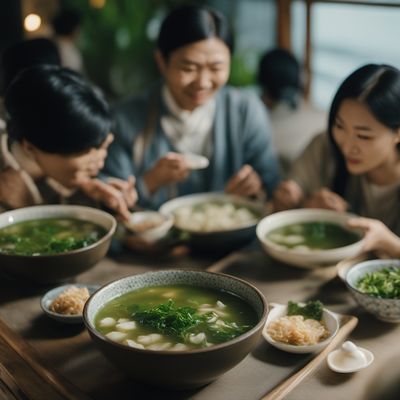
Miyeok-oi-naengguk
Seaweed soup
Miyeok-oi-naengguk is a traditional Korean cold soup made with seaweed and cucumber. It is a refreshing and healthy dish that is perfect for hot...
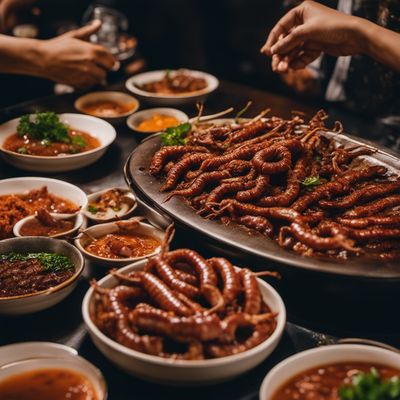
Gopchang-gui
Grilled small intestines
Gopchang-gui is a traditional Korean dish made from grilled beef or pork intestines.


